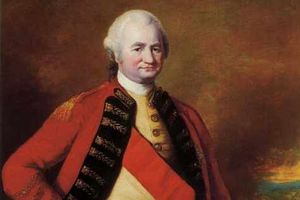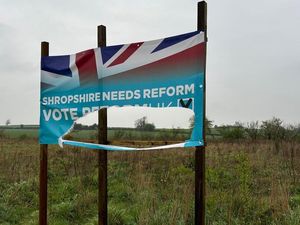The campaign to remember Clive of India
As Sir William Forwood tootled in his motor car through Shropshire in the summer of 1907, he broke his journey by stopping beside the little churchyard at Moreton Say.

As Sir William Forwood tootled in his motor car through Shropshire in the summer of 1907, he broke his journey by stopping beside the little churchyard at Moreton Say.
This brief stop, amongst other things to see the unmarked burial place of Clive of India, led to a campaign that would eventually see memorials and monuments erected to the great soldier in London and India.
Forwood's great-grandfather had been the vicar here in 1770, but he had not visited the place of worship for some 50 years, and he found that the "quaint, old-fashioned place" had changed somewhat.
His great great nephew, Jeremy Hardwick, from Culmington near Ludlow, picks up the story.
"I think he must have been interested in history, and he must have known where he was buried. It's a bit like going to Grasmere and going to see the grave of William Wordsworth. He would probably have known as a boy that it was there, but would not have meant much to him until he was older."
It is a discovery Jeremy made only recently, whilst thumbing through memoirs written by his great great uncle Forwood as a record for his "kith and kin", entitled Recollections of a Busy Life, published exactly 100 years ago.
In it, Forwood writes: "I knew the great Lord Clive had been buried in the church and asked to see his grave. There was no inscription on it, and he said the only record they had that the great soldier was buried in the church was the small brass plate above the vestry door.
"And he added, 'Strange to say, there is no memorial to the man who made India, either in England or India, except in Shrewsbury, his native town, I suppose'."
During a trip to India the following year, Forwood discovered there was no memorial to Lord Clive, the Shropshire-born officer and founder of the British Empire in India.
So, taken aback, on February 8, 1907, Forwood was moved to write to the Times newspaper from the Grand Hotel, Calcutta.
His letter began: "Sir, India has many monuments erected in honour of successful and popular viceroys and others who have served her well, but I have been unable to discover any monument to Lord Clive, to whom more than any human being we owe our great empire of India.
"Westminster Abbey contains no record of the great soldier-statesman. In the by-ways of Shropshire, in the quaint little church of Moreton-Saye (as it was spelt then), the village swain sits Sunday after Sunday over the grave of Lord Clive.
"No inscription marks it, not even his name; a small brass plate hid away over the vestry door and scarcely legible is the only record that remains of Robert Clive rest within its walls."
Forwood continued: "Westminster Abbey would more truly reflect all that is great worthy in England's history if it contained some appropriate record of Robert Clive and what he did to build up her empire."
The ball was rolling. As a result of the letter being published, the Times wrote a leading article. It gained support from Lord Curzon, who as viceroy had worked to "hold the scales even" between the races and religions in the country but, when in office, had also promoted the restoration of India's ancient monuments, including the Taj Mahal.
Letters began to pour in to the paper, as a result of which a committee was formed, raising between £5,000 and £6,000 to fund memorials of Lord Clive both in London and India.
"Five or six thousand pounds in those days would have been a lot of money," adds his great great nephew. "William Forwood would have been a very, very remarkable man, one of the old patricians, I think."
By Ben Bentley





